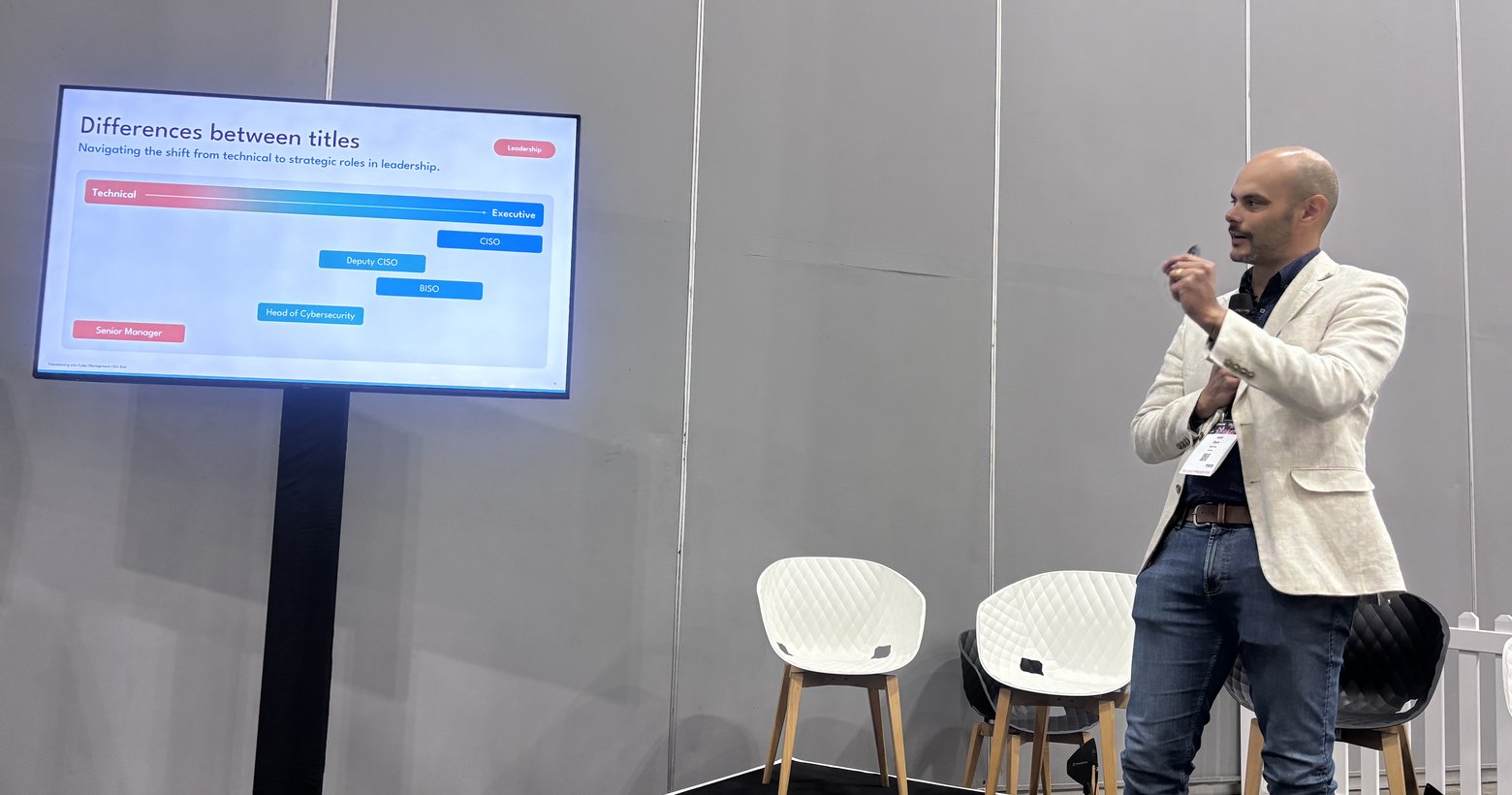Leadership in Cyber: Insights from CyberCon 2025 with Riki Blok

Cyber leadership isn’t just about managing technology - it’s about strategy, risk, and driving real business impact. At CyberCon Melbourne 2025, Riki Blok, Manager NSW Cyber with Talenza and with nearly 13 years in recruitment across infrastructure, software, and cyber security, shared his insights into what makes leaders in cyber stand out - and how candidates can successfully navigate this highly competitive space.
Understanding the Market
Riki highlighted that Australia has roughly 1,500 leaders in cyber (CISO, Head of Security, Director), but only a fraction of roles are advertised. With just 40 job postings in recent months, it’s clear the cyber leadership market is competitive and often hidden.
Interestingly, while LinkedIn reports only 15% of cyber leaders are open to new opportunities, Riki estimates the real number is closer to 40%. This means many positions are filled through covert executive searches, reinforcing the need to be proactive and build relationships with recruiters.
The Different Leadership Roles
Not all leadership roles in cyber are the same. Riki shared practical distinctions:
- CISO roles: Typically strategic, board-facing, and focused on risk rather than technical execution. Salaries can range from $300k–$400k+, with executive CISOs sometimes reaching high $400k.
- Head of Security: May be technically aligned or executive-focused, often involving regulatory experience. Salaries typically fall in the $200k–$300k range.
- FISO roles: Business-focused, less technical, supporting enterprise risk strategies.
- Deputy and Senior Manager roles: Often involve managing SOCs or technical disciplines, bridging strategy and execution.
Riki stressed that tailoring your approach to the role and audience is critical - the way you communicate with a technical team versus a non-technical executive board is very different.
What Makes a Strong Candidate
Drawing on his recent experience working on leadership roles, Riki highlighted common pitfalls and strategies to stand out:
- Avoid jargon in executive interviews - focus on business outcomes and risk reduction.
- Demonstrate leadership through real examples - e.g., guiding a business through a ransomware incident or implementing strategic initiatives that reduce financial risk.
- Research is key - know the company, its strategy, and how your experience aligns.
- Proactivity counts - reach out to recruiters, network through Career Village sessions, and position yourself before actively looking.
- Presentation matters - make your CV and LinkedIn profile executive-ready and reflective of business impact.
Riki also shared practical advice for candidates navigating sector bias and entering the Australian market, noting that prior sector experience matters in highly regulated industries like financial services. For candidates without local experience, taking a lesser role initially can open doors and demonstrate capability in the local context.
The Takeaway
Leadership in cyber is about more than technical skills - it’s about strategic thinking, business value, and influence. Riki’s session reinforced that preparation, research, and understanding the nuances of different roles are what set successful candidates apart.
In a market where many opportunities are unadvertised, building relationships with recruiters, understanding the company’s business goals, and demonstrating clear leadership impact are the keys to success.
At Talenza, we’re proud to support cyber professionals in navigating these leadership pathways, helping both businesses and candidates find the right fit in a complex and evolving landscape. Keen to learn more about the key insights shaping the cyber landscape? Download our Cyber Wrap 2025/2026.